
Best Wine Regions in Spain
 Today on the blog we welcome Helen Ruiz to talk about Spanish wine regions.
Today on the blog we welcome Helen Ruiz to talk about Spanish wine regions.
Helen Ruiz is a lover of all things wine and all things Spain. Born to a Mexican-Spanish couple in San Diego, she became interested in her roots from a young age. She used to alternate spending her summers between Mexico and Spain, visiting her large families in both countries.
After college, she spent a year living in Spain and learning all about its winemaking traditions as this was the path she had decided to follow in life. Nowadays, she runs a wine bar in San Diego with an extensive Spanish wine selection, and is the second person behind winerooster.com.
Today, she’ll tell us what are the best wine regions Spain has to offer.
Spain, a land of rich history, vibrant culture, and diverse landscapes, is not only famous for its bullfights and beautiful beaches but also for its exceptional wines. As Spain produces some of the world’s most famous wines, it has a lot of wine regions, each with its unique character and flavors.
In this article, we will explore the best wine regions in Spain, shining a light on the remarkable wines they produce and the experiences they offer for wine tourism.
Rioja Wine Region
Rioja, situated in the northern part of Spain, enjoys a temperate climate that’s ideal for winemaking. Its vineyards are located between the Ebro River and the Sierra de Cantabria mountains, creating a balance of sun and cool air that grapes love.
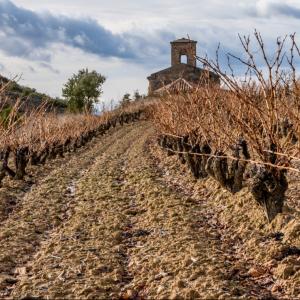 Rioja’s terroir is influenced by its diverse soils and microclimates, giving wines from different subregions distinctive characteristics. The region’s commitment to oak aging also adds a unique touch to Rioja wines. Oak aging imparts flavors of vanilla, toasted oak, and caramel, softens tannins, adds complexity, and enhances the aging potential and overall balance of the wine from the Rioja wine region.
Rioja’s terroir is influenced by its diverse soils and microclimates, giving wines from different subregions distinctive characteristics. The region’s commitment to oak aging also adds a unique touch to Rioja wines. Oak aging imparts flavors of vanilla, toasted oak, and caramel, softens tannins, adds complexity, and enhances the aging potential and overall balance of the wine from the Rioja wine region.
Rioja’s winemaking traditions date back centuries. Monasteries and noble families cultivated vines, laying the foundation for the wine culture of the Rioja wine region. Today, the Rioja region is synonymous with quality Spanish wine.
Some renowned wineries like Bodegas Muga, Marqués de Riscal, and CVNE have gained international recognition for their exceptional Rioja wines. You can visit their vineyards and take part in wine tastings.
Notable Grape Varieties in the Rioja Wine Region
In Rioja, the most important grapes are Tempranillo, Garnacha, and Graciano. These grapes help make different kinds of wine, such as Crianza, Reserva, and Gran Reserva.
These words, Crianza, Reserva, and Gran Reserva, tell you how long the Rioja wines are aged, with Crianza being the youngest, Reserva taking more time, and Gran Reserva being the one with the longest aging. Each type of wine has its own special taste.
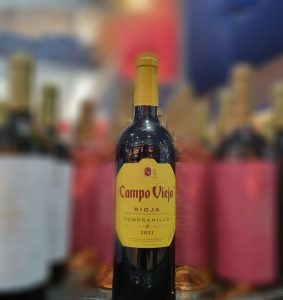 Tempranillo: Tempranillo is the dominant grape variety in Rioja and is responsible for the majority of wines produced in the region. It contributes to the region’s distinctive red wines, which are often robust and full-bodied.
Tempranillo: Tempranillo is the dominant grape variety in Rioja and is responsible for the majority of wines produced in the region. It contributes to the region’s distinctive red wines, which are often robust and full-bodied.
Garnacha: Garnacha adds a fruity and slightly spicy flavor to the wine. When mixed with Tempranillo, it makes the wine more interesting.
Graciano: Graciano is not as well-known, but it’s important. It makes the wine intense and fresh. It can bring in flowery smells, a bit of sourness, and dark fruit tastes.
Penedès Wine Region
Penedès is technically part of the Catalonia wine region, but instead of talking about the Catalonia region as a whole, I’ll focus on two of its most significant subregions – Penedès and Priorat.
Penedès is famous for its sparkling wines. Its proximity to the Mediterranean Sea and the Montserrat mountain range offers an excellent environment for grape cultivation.
 The climate there is Mediterranean, with mild winters and warm summers. The proximity to the sea moderates temperatures and results in well-balanced grapes.
The climate there is Mediterranean, with mild winters and warm summers. The proximity to the sea moderates temperatures and results in well-balanced grapes.
Penedès is the heart of Cava production, Spain’s answer to Champagne. The region’s winemakers create exceptional sparkling wines through the traditional method.
The Penedès wine region is home to distinguished Cava houses like Freixenet and Codorníu. Their dedication to quality has elevated Cava to international acclaim.
Exploring Penedès is a must for wine lovers. The Penedès wine route takes you through picturesque vineyards, and you can enjoy the charming small towns and local cuisine along the way (don’t miss trying the peaches; they’re absolutely amazing).
Notable Grape Varieties in the Penedès Wine Region
The most important grape varieties in Penedès include:
Xarel-lo: This white grape is a key component in the production of Cava. Xarel-lo grapes contribute to Cava’s acidity and fresh, citrusy flavors.
Macabeo (also known as Viura): Another white grape variety commonly used in Cava production, Macabeo grapes bring crispness and floral notes to the sparkling wines.
Parellada: This white grape variety is a traditional choice for Cava, adding a delicate, fruity character and floral aromas to the final blend.
Garnacha: Although Garnacha is more commonly associated with red wines, it’s also grown in Penedès for rosé and red wines. It can offer red fruit flavors and a touch of spice.
Monastrell (Mourvèdre): Monastrell is often used in red wine production in Penedès. It brings dark fruit flavors and a touch of earthiness to the wines.
Priorat Wine Region
The Priorat wine region, situated in the northeastern part of Spain, is famous for producing exceptional and robust red wines. The region is known for its distinct terroir, steep vineyards, and the distinctive flavor profiles of its wines.
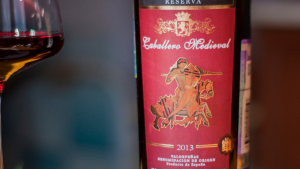 Priorat benefits from a unique terroir with rocky soils called “licorella.” These rocky soils are combined with a Mediterranean climate, providing the ideal conditions for grapevines. The vineyards are often planted on steep slopes, where the vines struggle to find nutrients, resulting in grapes with concentrated flavors.
Priorat benefits from a unique terroir with rocky soils called “licorella.” These rocky soils are combined with a Mediterranean climate, providing the ideal conditions for grapevines. The vineyards are often planted on steep slopes, where the vines struggle to find nutrients, resulting in grapes with concentrated flavors.
Priorat wines often undergo extensive oak aging. This aging process in oak barrels imparts a unique complexity to the wines. The wines can display notes of dark fruit, spices, licorice, and mineral undertones, contributing to their distinctive character.
Priorat is officially recognized as a Denominació d’Origen Qualificada (DOQ), which signifies its superior quality within the Spanish wine classification system.
Priorat has become a popular destination for wine enthusiasts and tourists. Many wineries in the region offer guided tours and wine tastings, allowing visitors to explore the vineyards and wine cellars while learning about the winemaking process.
Notable Grape Varieties in the Priorat Wine Region
The Priorat wine region in Spain is known for producing some of the finest Spanish wines, primarily from a combination of local and international grape varieties. The most notable grape varieties in Priorat include:
Garnacha (Grenache): Garnacha is one of the cornerstone grape varieties in Priorat. It is known for its ability to produce wines with ripe red fruit flavors, spice, and a rich, full-bodied character. Old-vine Garnacha is highly prized in the region for its depth and complexity.
Carinena (Carignan): Carinena is another essential grape in Priorat, often used in red wine blends. It contributes to the wine’s structure, adding depth and a robust, tannic backbone.
Syrah: This international grape variety has been successfully incorporated into Priorat’s winemaking tradition. It can contribute to the wine’s aromatic complexity, adding notes of black fruit, black pepper, and sometimes floral elements.
Cabernet Sauvignon: Cabernet Sauvignon is occasionally used in Priorat wines, providing additional structure, dark fruit flavors, and a sense of aging potential.
Merlot: Merlot, another international variety, is less common in Priorat but is occasionally used in blends to soften the wine’s tannins and enhance its approachability when young.
Macabeo and Pedro Ximenez: While red wine grapes are the main focus in Priorat, some winemakers also produce white wines from grape varieties like Macabeo and Pedro Ximenez. These white wines are typically aromatic and can offer a refreshing contrast to the region’s robust reds.
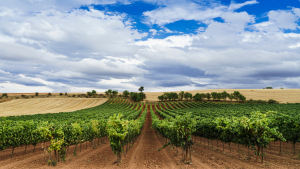 Ribera del Duero Wine Region
Ribera del Duero Wine Region
The Ribera del Duero wine region, located in northern Spain, is renowned for producing exceptional red wines that are rich, complex, and deeply flavorful. The region is characterized by its unique terroir, ancient vineyards, and a commitment to quality winemaking.
Ribera del Duero has a specific terroir, with vineyards situated along the banks of the Duero River. The region’s high elevation, with vineyards located between 2,400 and 2,800 feet (730-850 meters) above sea level, results in a significant temperature variation. This climatic characteristic, combined with the limestone and clay soils, contributes to the development of ripe, structured grapes.
Ribera del Duero wines are almost always aged American oak barrels. This aging process adds layers of complexity, with flavors of dark fruit, vanilla, tobacco, and spice, along with well-integrated tannins.
Ribera del Duero is officially recognized as a Denominación de Origen Protegida (DOP) within Spain’s wine classification system, signifying its high-quality standards and stringent regulations.
The region is home to old and pre-phylloxera vineyards, some of which are over a century old. These old vines produce grapes with remarkable concentration and depth of flavor.
Notable Grape Varieties in the Ribera del Duero Wine
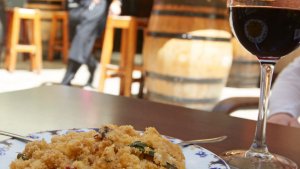 Here are some of the key grapes used in this northern Spanish wine region:
Here are some of the key grapes used in this northern Spanish wine region:
Tempranillo: In Ribera del Duero, most of the wines are made using the Tempranillo grape, producing unique red wines known for being strong, full-bodied, and with a lot of aging potential.
Cabernet Sauvignon: It is less common than Tempranillo, but it’s sometimes used in Ribera del Duero wines. It adds complexity and structure to the blends, providing tannins and dark fruit flavors.
Merlot: Merlot is another grape variety that can be found in Ribera del Duero wines, typically used in smaller quantities to soften the tannins and enhance the wines’ aromatics.
Malbec: Although not as widely planted as Tempranillo, Malbec is occasionally used in Ribera del Duero wines to contribute to the blend’s depth and color.
Garnacha (Grenache): Garnacha is not as common in Ribera del Duero as it is in some other Spanish wine regions, but it may be used in small amounts to introduce a touch of red fruit flavors and spice to the wines.
Albillo: Albillo is a white grape variety that is native to Ribera del Duero. It is used in the production of white wines in the region, which are much less common than the red wines.
Andalucia Wine Region
The Andalucia wine region, located in southern Spain, is popular for its unique winemaking traditions, sherry production, diverse range of wine styles, and, of course, Flamenco. The region’s winemaking heritage is deeply rooted in its distinctive terroir, historical significance, and dedication to preserving traditional methods.
Andalucia’s terroir is as diverse as its landscape, with various microclimates and soil types. The region’s proximity to the Mediterranean Sea and the Atlantic Ocean plays an important role in shaping its climate, making it suitable for a wide range of grape varieties.
Andalucia is most famous for its sherry production, with the city of Jerez de la Frontera as the heart of the Sherry Triangle. The unique solera aging system is a hallmark of sherry production, resulting in a wide spectrum of sherry styles, from dry Fino and Manzanilla to rich and sweet Pedro Ximenez.
Andalucia offers a variety of wine styles beyond sherry wines. The region is known for producing fortified wines, such as Oloroso and Amontillado, as well as still wines, including reds, whites, and rosés.
Notable Grape Varieties in the Andalucia Wine Region
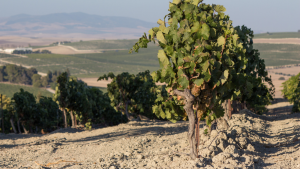 The Andalucia has a unique wine portfolio:
The Andalucia has a unique wine portfolio:
Palomino: Palomino grapes are the primary grape variety used for sherry production, producing wines with a wide range of styles, from the dry and delicate Fino to the richer and nuttier Amontillado.
Pedro Ximenez: Pedro Ximenez, often referred to as PX, is used to produce intensely sweet and luscious wines, known for their flavors of raisins, figs, and molasses. These wines are often used for blending or consumed as dessert wines.
Tempranillo: While primarily associated with other Spanish wine regions, Tempranillo grapes are also cultivated in Andalucia, contributing to the production of red wines that display a blend of traditional Spanish wine characteristics with the region’s unique terroir.
Muscat (Moscatel): Muscat grape varieties are used in the production of sweet, aromatic wines, particularly in the Malaga and Sierras de Malaga subregions of Andalucia. Muscat wines are known for their floral and fruity profiles.
Other Local Varieties: Andalucia also cultivates native grape varieties like Palomino Fino, Zalema, and Listán, which are essential for the production of traditional local wines beyond sherry.
Rías Baixas Wine Region
The Rías Baixas wine region, located in the northwestern part of Spain, is renowned for its unique winemaking traditions, Albariño wines, and a coastal terroir that gives its wines a distinctive character.
 Rías Baixas stands out because it’s right next to the Atlantic Ocean, and this oceanic influence plays an important role in shaping the region’s climate. The vineyards in Rías Baixas benefit from the cool, humid breezes that come in from the ocean. These breezes not only help maintain the grapes’ acidity but also contribute to the overall refreshing quality of the wines produced here.
Rías Baixas stands out because it’s right next to the Atlantic Ocean, and this oceanic influence plays an important role in shaping the region’s climate. The vineyards in Rías Baixas benefit from the cool, humid breezes that come in from the ocean. These breezes not only help maintain the grapes’ acidity but also contribute to the overall refreshing quality of the wines produced here.
Rías Baixas offers different wine styles, from the zesty and youthful Albariño wines to oak-aged and complex expressions. The region’s subzones, including Val do Salnés, O Rosal, and Ribeira do Ulla, each contribute to the variety of wine styles found in Rías Baixas.
Rías Baixas is officially recognized as a Denominación de Origen Protegida (DOP), reflecting its commitment to quality standards and regulations.
Notable Grape Varieties in the Rías Baixas Wine Region
While Albariño is the dominant grape variety, some winemakers experiment with other grape varieties, adding some diversity to the region’s wines.
Albariño: This is the star grape of Rías Baixas and is famous for producing crisp, aromatic, and vibrant white wines. The region’s winemaking tradition revolves around Albariño, known for its citrus, green apple, and floral notes, as well as its excellent acidity.
Loureira: This grape contributes to wines with aromatic and floral characteristics.
Treixadura: It’s known for its bright acidity and the ability to add freshness to the wines.
Conclusion
The Spanish wine regions offer a lot when it comes to flavors, cultures, and experiences. Each region contributes to Spain’s prominent position in the global wine industry. Spanish wines have gained international recognition, and the unique characteristics of each region have contributed to their success.
 Whether you really love wine or just enjoy a nice glass now and then, Spain’s got something you’ll like. And if you decide to go on a wine adventure in Spain, you’re in for a treat. You can visit famous wineries, see beautiful vineyards, and enjoy yummy Spanish food.
Whether you really love wine or just enjoy a nice glass now and then, Spain’s got something you’ll like. And if you decide to go on a wine adventure in Spain, you’re in for a treat. You can visit famous wineries, see beautiful vineyards, and enjoy yummy Spanish food.
Ready to explore Spain’s delicious wines and beautiful wine regions? Start planning your Spanish wine adventure now and enjoy all this lovely wine country has to offer.




